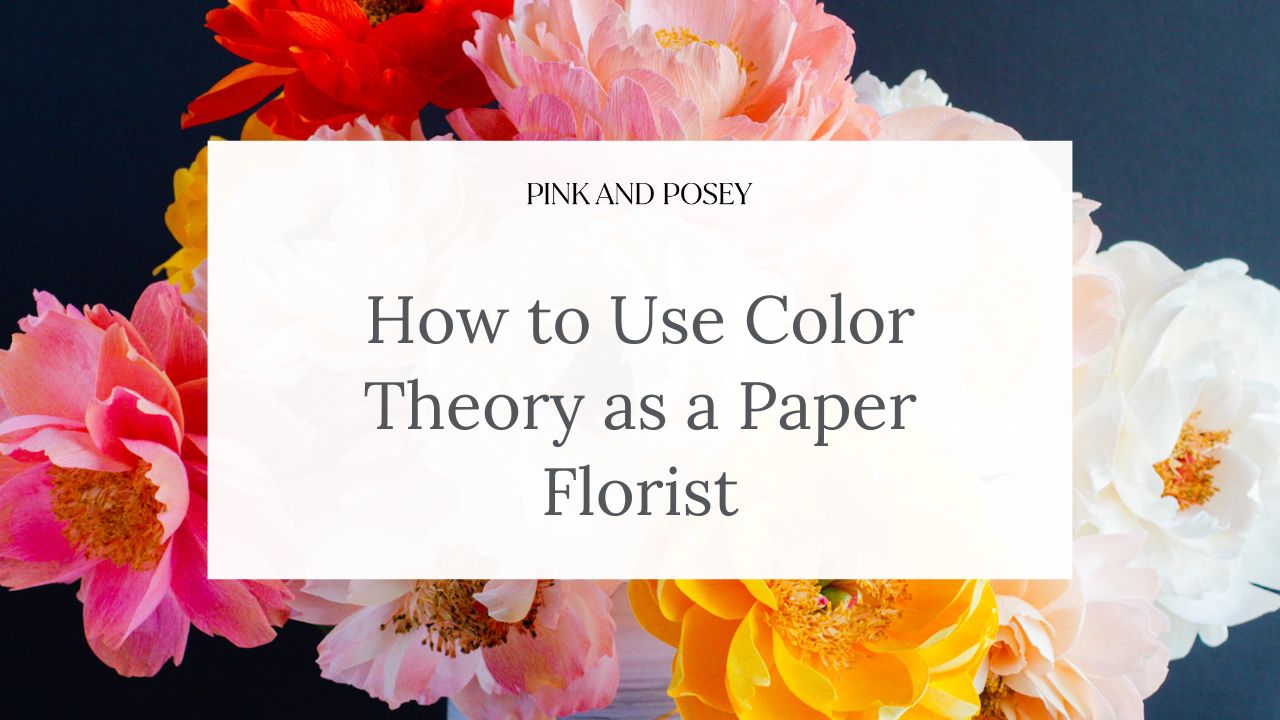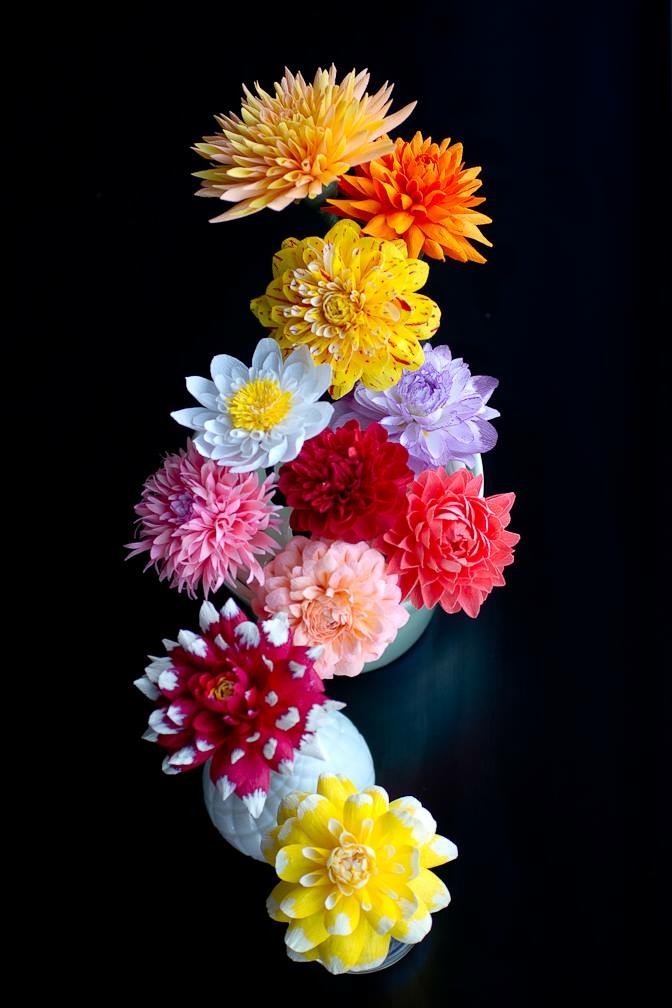How to Use Color Theory as a Paper Florist
Jul 07, 2021
To make the best paper flowers you can, understanding the fundamentals is key. Think about choosing the right weight of crepe paper. One aspect that often gets overlooked is color theory.
Picking the right colors becomes particularly important when using color implements on colored crepe, or when you start to arrange your blooms and foliage together.

There are endless color possibilities and combinations, as well as personal tastes and trends to account for. So where do you begin? Understanding color theory can give you the fundamentals you need.

If you feel a little lost when it comes to color theory, look no further. Here is your guide to understanding basic color theory.
What Is Color Theory?
Color theory combines the best of art and science to give us a basic set of principles when it comes to colors. This helps us know how colors relate to one another, how they mix, and how they will look together.

Let’s go over some of the most important aspects of color theory.
Basic Colors
While there is an endless number of colors in the world, there are some colors that form the building blocks.

- Primary colors: Red, yellow, and blue. These are the big three that can be mixed to create your secondary colors.
- Secondary colors: Green, purple, and orange. Blue and yellow make green, red and blue make purple, and red and yellow make orange.
To visually show how colors relate to one another, we use a color wheel. Think of rainbow colors running around a circle. Secondary colors sit between the primary colors they are made from. Many hues can sit between the six main colors, blending together from one to the next.

You’ll find all of these basic colors and many in between when it comes to crepe paper. Italian crepe papers tend to have a wider range of colors and single color options compared to the German crepe paper. The German double-sided paper tends to have one color on one side and a different color on the other side. If you are bothered by the two sided colors, consider laminating fine crepe paper, which is usually 40 or 60 gsm, to create your own double sided paper that is the same on both sides.

Color Variations
There are an infinite number of colors that can be created beyond the primary and secondary colors. You might have heard these terms, but been unsure of what they mean.
- Hue: The dominant color of a color family. These can land anywhere on the spectrum between those basic colors we discussed. For example, a pure greenish-bluish teal.
- Tint: Lighter color of hue made by adding white.
- Tone: Darker color of hue made by adding neutral gray.
- Shade: Darker color of hue made by adding black.
Some color wheels will include the tints, tones, and shades by varying a hue from the center of the circle to the outer edge. If you took a slice out of the wheel like it was a pie, you’d have a complete color family from hue to each variant.

To implement these color variations, consider using PanPastels, watercolors, and alcohol inks to create these infinite range of colors. By adding different shades, you are creating depth and contrast that will add interest to your paper flowers.
Another important term is saturation. This is how vibrant a color looks. High saturation is vivid, while low saturation is more muted.
Neutral Colors
Not represented on the color wheel are neutral colors like brown, gray, and beige, which are really hard to find when it comes to crepe paper color choices. Consider using acrylic paint or watercolors to get your neutral colors.

You may also be wondering about black and white. I believe only Italian, Chinese, and Mexican crepe paper have a black option, though some tend to stray toward the dark black-blue-purple range or a dark grey-brown.
Depending on whether you’re talking about physics or pigments, you may have heard black and white called, well, not colors, but rather the absence of color or the combination of all colors. When using coloring methods on your paper flowers, you should be aware that adding the three primary colors together or the three secondary colors together, you will get a blackish-brown. The same will happen with complementary colors. Using green paint on a red crepe will create brown.
For design purposes, black and white can be treated as neutral colors. This would include planning out the color scheme for a floral arrangement.

Grouping Colors
There are common ways to group colors. Knowing these terms will help you play with your color schemes more effectively.
- Warm colors: Reds, oranges, and yellows. One side of the color wheel.
- Cool colors: Greens, blues, and purples. The other side of the color wheel.
- Analogous colors: Three colors that sit next to each other on the color wheel, such as red, red-orange, and orange.
- Complementary colors: Two colors that sit opposite on the color wheel, one cool and one warm. With the main six colors, that means blue and orange, red and green, and yellow and purple.
- Split-complementary colors: Uses three colors, two of which are analogous colors (sitting close together on one side of the wheel) and the other on the opposite side of the wheel.
- Monochromatic colors: The lighter and darker variants of one hue. Includes tints, tones, and shades of a hue.

That was a lot, but you made it through. Now you should have a good grasp of color theory and how it can help you be a better paper florist. With this strong foundation, you can branch out to explore the infinite possibilities that color holds. It may feel like a lot to take in right now, but you’ll learn along the way and these principles will begin to feel second nature.
Use color theory to inform your choices, but don’t be afraid to experiment.
Color should be fun!

Coming Soon: My First Book!
How To Make Paper Flowers
Sign up for a sneak peek at the book, and for updates on its publication.
I respect your privacy and will never share your email and contact information with any third party without your permission.




